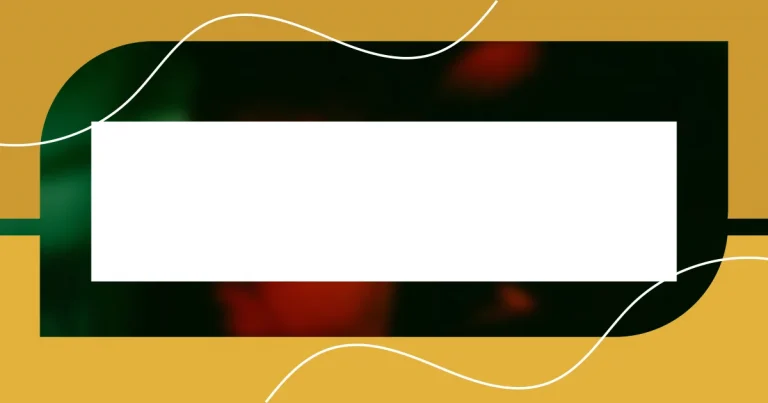Key takeaways:
- Understanding light quality, direction, and source—both natural and artificial—is essential for storytelling through portrait photography.
- Utilizing techniques like open shade, backlighting, and light modifiers can dramatically enhance the emotional depth and aesthetic quality of portraits.
- Experimentation with both light placement and color can lead to unique creative outcomes, making each portrait session an opportunity for discovery and artistic expression.

My introduction to portrait lighting
I still remember the first time I set up my camera for portrait lighting—it felt like stepping onto a new stage. As I fiddled with the softbox, a wave of excitement washed over me. How could something so simple completely transform the ambiance of a photo?
Then came that unforgettable revelation during my first session with a model. As light spilled gently across her face, creating shadows that danced with emotion, I realized that portrait lighting isn’t just about technique; it’s about storytelling. I found myself asking, what story do I want to tell with this light?
I’ll never forget the moment I captured that perfect shot, where every highlight and shadow felt just right. Each click of the shutter became a new adventure, revealing the depth and character of my subjects. Portrait lighting opened my eyes to a world where emotions and stories blend beautifully, and I couldn’t wait to dive deeper into this craft.

Understanding the basics of light
Understanding light is essential in portrait photography. I remember being puzzled by how light interacts with different surfaces. For instance, when I first experimented with natural versus artificial light, the outcome was strikingly different. Natural light can create a softer, more flattering look, while artificial light allows for more control and creativity. This realization hit home during an outdoor shoot, where the golden hour transformed my subject, enveloping them in warmth. It really opened my eyes to how the time of day can impact the emotion of a portrait.
The quality of light, which refers to its softness or hardness, plays a crucial role in defining the mood of your portrait. I’ve often found myself gravitating towards soft light, like that from a cloudy sky or a diffusion filter. On one particular shoot, using a softbox completely changed the feel of the images. The soft, diffused light wrapped around my subject, creating a gentle and inviting ambiance. It made me appreciate how vital it was to choose the right source and modifier for the desired effect.
Finally, the direction of light can dramatically alter the storytelling aspect of a portrait. I vividly recall the first time I positioned a light source at an angle to my subject. The contrast created depth and intrigue that simply wasn’t there before. As I witnessed the shadows sculpt my subject’s features, I realized that even a slight adjustment could evoke an entirely different emotion. By learning to manipulate these elements, I’ve found a more profound connection to my craft and my subjects.
| Light Type | Characteristics |
|---|---|
| Natural Light | Soft; changes with time of day; warm tones |
| Artificial Light | Controlled; versatile; can be hard or soft |

Techniques for natural light portraits
One technique I’ve found particularly effective for capturing natural light portraits is to take advantage of open shade. I recall a sunny afternoon when my model and I sought cover under a large tree; the way the dappled light filtered through the leaves added a dreamy quality to the images. Using this technique softens the light and minimizes harsh shadows, allowing for a more even and flattering look.
Here are some key tips for working with natural light:
- Location Matters: Find areas with soft, diffused light like shaded parks or near buildings that block the sun.
- Time of Day: The golden hour—shortly after sunrise or before sunset—offers the warmest and most flattering light.
- Reflectors: Utilize reflectors to bounce light onto your subject’s face, highlighting their features beautifully without overpowering the soft light.
Another invaluable technique is to embrace backlighting. One day, I positioned my subject so the sun was directly behind her, and the effect was nothing short of magical. The ethereal glow around her edges created a halo effect, adding a layer of emotion that spoke volumes. This method enhances depth and drama in portraits, making them more captivating.
Consider these points when practicing backlighting:
- Expose for the Subject: Make sure to adjust your exposure so that the subject is well-lit, even if the background is backlit.
- Lens Flares: Experimenting with lens flares can add an artistic touch; just be mindful of how they affect the overall composition.
- Positioning: Adjust your subject’s position and angle to see how the light interacts with their features, creating more dynamic images.
These techniques have truly enriched my journey with portrait lighting, helping me uncover layers of emotion and beauty within each shot.

Mastering artificial lighting methods
Mastering artificial lighting can feel a bit overwhelming, but I found it transformative once I understood its nuances. When I first used a speedlight, I was amazed by how adjusting its power levels altered the entire mood of my portraits. I remember a shoot where I experimented with bounce lighting—using a white wall to reflect the light back at my subject. The results were stunning; it created a soft light that added a beautiful glow to her skin, making her smile even more vibrant. Have you ever tried bouncing light off surfaces? It can really elevate your work.
Another method I’ve grown fond of is using colored gels on my lights. I vividly recall a twilight session where I positioned a gelled light behind my model, casting a warm hue that mixed seamlessly with the cool evening surroundings. That contrast brought a dramatic flair to the images, which truly captured the essence of the moment. It made me think—how can colors in light influence the emotions conveyed in your photography? I’ve learned that playing with color can significantly enhance the narrative behind each shot.
Lastly, I can’t stress enough the importance of practical light sources in portrait photography. I was once in a dimly lit café, and instead of relying solely on my flash, I used the ambient table lamps to create a cozy atmosphere. It turned a mundane photo into something intimate and inviting. This experience reinforced my belief that sometimes the most intriguing portraits come from unconventional light sources. Have you explored non-traditional lighting options? They might just unlock a new level of creativity for you.

Using modifiers for better results
Using modifiers in portrait photography can completely transform your images. I remember the first time I experimented with a softbox during a studio session. The soft, diffused light it produced wrapped around my subject beautifully, giving her a luminous quality that emphasized her features without overwhelming them. It was a game changer; have you ever noticed how the right modifier can create an entirely different mood in your photos?
In my experience, reflectors are another fantastic tool for achieving balance in lighting. On a bright day, I often use a gold reflector to warm up my subject’s face, especially during outdoor shoots. I recall a time when I was shooting a model in a sunlit park. The light hitting her face initially felt harsh, but with a quick adjustment of the reflector, it became this radiant glow that complemented the earthy tones around us. Isn’t it amazing how a small adjustment can make such a significant impact?
There are also times when I find that using grids on my softboxes helps focus the light exactly where I want it. I was working on a dramatic portrait series, and the narrow beam allowed me to highlight my subject’s eyes while keeping the background darker. This not only drew attention to her expression but also added depth and intrigue to the composition. Have you ever played with light modifiers to isolate your subject better? It’s like painting with light, and each modifier can be a brushstroke that enhances your artistic vision.

Creative portrait lighting setups
One of my favorite creative portrait lighting setups involves using the golden hour’s natural light combined with artificial sources. A couple of months ago, I was shooting at dusk when I placed a soft LED panel at a low angle behind my model. This technique created a stunning backlight that highlighted her hair’s texture while the warm hues of the setting sun bathed her in a gentle glow. It was a dynamic interplay; have you considered the magic that happens when natural and artificial lights mingle?
I’ve also played around with high-contrast lighting setups that produce striking shadows. During one particular session, I used a single hard light source positioned at the side, dramatically illuminating half of my subject’s face while casting deep shadows on the other side. The effect was raw yet powerful, encapsulating a range of emotions that a standard lighting setup couldn’t achieve. It made me wonder—how do shadows influence the narrative in your own portraits?
Another setup that consistently excites me involves using multiple colored lights to create a mood or theme. I remember a shoot inspired by an artist’s studio, where I placed red and blue gels on two separate lights. The interplay created a surreal vibe that transformed my model into a canvas painted with emotion. Every time I looked through the lens, I felt like I was discovering a new layer. It’s fascinating how such creative contrasts can evoke different feelings; have you experimented with colors to enhance storytelling in your photography?

My personal tips and experiences
My journey with portrait lighting has been a rollercoaster of experimentation and discovery. One tip I swear by is the subtle art of light placement. During a recent shoot, I realized that moving a light source just a foot to the left transformed the entire scene. The difference was striking; the shadows became more flattering, and the highlights popped just right. Have you ever discovered such a game-changing adjustment in your own work? It’s the little things that often yield the most surprising results.
I’ve often found that the mood of the shoot can dramatically affect my approach to lighting. Last summer, I was photographing a couple celebrating their engagement at a quaint café. As the sun began to dip below the horizon, the ambiance turned incredibly romantic. I used a mix of warm and cool tones with LED lights to mirror that intimacy. The couple’s laughter contrasted beautifully with the soft lighting, creating images that felt just alive. It made me ponder—how does the mood of your environment shape your lighting choices?
One of my favorite tools for enhancing portraits is my portable battery pack. Last winter, I took it along for an outdoor shoot, and it saved the day. I had planned for natural light but was caught off guard by unexpected clouds. The battery pack allowed me to set up my light quickly, giving the model a stunning glow against the dreary backdrop. It felt like I had control over the weather itself. Have you ever had a piece of equipment become your lifeline in an uncertain situation? In moments like these, I’ve learned that adapting to change is key to capturing memorable portraits.














